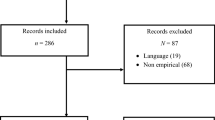Abstract
Compared to people employed in other occupations, teachers are more likely to report having voice problems. They are more likely to perceive that their voice problems limit their current job performance and also adversely affect their future career options. The current study examines the acoustic parameters that are sensitive to vocal loading in pre and post teaching circumstances and adds to the existing literature. Voice samples were recorded from 30 primary school teachers, 15 females and 15 males in the age range of 28–35 years (mean age 29.3 years), with teaching experience of 10–12 years. Mean pitch, minimum pitch, maximum pitch, number of voice breaks, jitter local, shimmer local and mean harmonic to noise ratio were estimated using PRAAT software before and after a typical teaching day. Significant difference was seen when number of voice breaks was compared in pre and post teaching conditions in both males (p = 0.02) and females (p = 0.02) in the conversation task. Moreover, significant differences in mean pitch was observed in the task of slogan repetition (p = 0.03), but only in males. These parameter can be used as indicators of vocal fatigue among teachers and can be used in objective determination of at risk population.
Similar content being viewed by others
References
Thurman L, Klitzke CA (1994) Voice education and health care for young voices. In: Benninger M, Jacobson B, Johnson A (eds) Vocal arts medicine: the care and prevention of professional voice disorders. Thieme Medical Publishers Inc., New York, pp 226–268
Smith E, Gray SD, Dove H, Kirchner L, Heras H (1997) Frequency and effects of teachers’ voice problems. J Voice 11(1):81–87
Boominathan P, Rajendran A, Nagarajan R, Seethapathy J, Jnanasekar M (2008) Vocal abuse and vocal hygiene practices among different level professional voice users in India: a survey. Asia Pac J Speech Lang Hear 11(1):47–53
Shewell C (2013) Voice work: art and science in changing voices. Wiley-Blackwell, London
Colton RH, Casper JK, Leonard R (2006) Understanding voice problems: a physiological perspective for diagnosis and treatment. Lippincot Williams & Wilkins, Baltimore
Gelfer MP, Andrew ML, Schmidt CP (1991) Effects of prolonged loud reading on selected measures of vocal function in trained and untrained singers. J Voice 5:158–167
Stemple JC, Stanley J, Lee L (1995) Objective measures of voice production in normal subjects following prolonged voice use. J Voice 9:127–133
Verstraete J, Foreez G, Mertens P, Debruyne F (1993) The effects of sustained phonation at high and low pitch on vocal jitter and shimmer. Folia Phoniatr Logop 45:223–228
Ilomaki I, Laukkanen AM, Leppanen K, Vilkman E (2008) Effects of voice training and voice hygiene education on acoustic and perceptual speech parameters and self-reported vocal well-being in female teachers. Logop Phoniatr Vocol 33(2):83–92. doi:10.1080/14015430701864822
Dehqan A, Scherer RC (2013) Acoustic analysis of voice: Iranian teachers. J Voice 27(5):655.e17–655.e21. doi:10.1016/j.jvoice.2013.03.003
Rajasudhakar R, Savithri SR (2009) Voicing periods in a primary school teacher. J All India Inst Speech Hear 28:36–41
Sivasankar M (2002) Effects of vocal fatigue on voice parameters of Indian Teachers Indian. J Otolaryngol Head Neck Surg 54(3):245–247. doi:10.1007/BF02993116
Boersma P, Weenink D (2005) Praat-Doing phonetics by computer (version 5.0.17) [computer program]. www.praat.org. Retrieved April 2008
Acknowledgements
Our sincere thanks to Prof. T.A.Subba Rao, for his timely help and guidance that helped us carry out the study smoothly.
Author information
Authors and Affiliations
Corresponding author
Ethics declarations
Conflict of interest
The Authors declare that they have no conflict of interest.
Human and Animal Right Statements
All procedures performed on human participants were in accordance with the ethical standards of the institutional research committee and with ethical standards comparable to the 1964 Helsinki declaration and its later amendments.
Informed Consent
Informed consent was obtained from all individual participants that were included in the study. The data obtained from the participants were solely for research purposes and not for any personal gains.
Rights and permissions
About this article
Cite this article
Alexander, S.A., Shetty, P.P. & Mathew, K. Acoustic Analysis of Indian Teachers’ Voice: Pre and Post Teaching Circumstances. Indian J Otolaryngol Head Neck Surg 71 (Suppl 1), 100–103 (2019). https://doi.org/10.1007/s12070-017-1129-y
Received:
Accepted:
Published:
Issue Date:
DOI: https://doi.org/10.1007/s12070-017-1129-y




